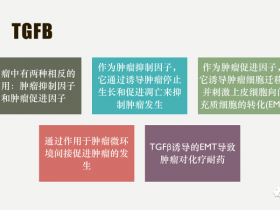- A+

可观看视频(From Wikipedia, the free encyclopedia)T细胞(绿)与B细胞间形成免疫突触。

免疫突触也称为超分子激活簇或SMAC。[3]这种结构由同心环组成,每个环含有分离的蛋白质簇-通常称为免疫突触的靶心模型,即典型的Bull’s-eye结构。
在1998年的一篇发表于Nature的《three-dimensionalsegregation of supramolecular activation clusters in T cells》中首次描述了其3D结构。
C-SMAC(中央-SMAC):蛋白激酶C,[4] CD2,CD4,CD8,CD28,Lck,和Fyn。[5]
p-SMAC(外周-SMAC),其中淋巴细胞功能相关抗原-1(LFA-1)和细胞骨架蛋白talin聚集在其中。[3]
d-SMAC(远端-SMAC)富含CD43和CD45分子。[6] [7]

The study of the IS has focused on the establishment of hierarchical, spatiotemporally segregated events during the contact between the APC and the T cell. These events include the following:
1) Establishment of low-affinity, exploratory contacts between the T cell and the APC
2) Initial, scattered contact of the TCR with the antigenloaded MHC on the APC, followed by initiation of TCRdependent signaling pathways upon specific recognition of
the MHC-peptide complex. Such activation is “umbrella shaped” (simultaneous activation and amplification of multiple pathways through different sets of effectors) and induces the activation of multiple effectors, including membrane-bound molecules, e.g. integrins, signaling adaptors, cytoskeletal elements, and transcription factors
3) Transactivation of adhesion molecules (integrins) that consolidate the interaction between the T cell and the APC.
This step actually begins after initial TCR activation (step 2), but they evolve in parallel
4) Cytoskeleton- and signaling-dependent clustering of adhesion molecules and the TCR/CD3 complex at the contact interface between the T cell and the APC. In most cases, clustering is spatiotemporally segregated, i.e. the TCR/CD3 clusters and the integrin clusters, and their respective sets of adaptors, are separated
5) Signaling- and motor-dependent positioning of the secretory apparatus (including microtubules and microtubule-binding proteins) to the contact interface of the T cell
6) (Primed CTL only, also natural killer [NK] cells) Actin clearance at the center of the contact interface, enabling a tight association of the secretory apparatus with the plasma membrane
7-i) (TH cells) Stabilization of the contact and transcriptional activation of the T cell, including cytokine production and the expression of activation markers
7-ii) (Naïve CTL) Stabilization of the contact, priming and activation
7-iii) (Primed CTL and NK cells) Degranulation and target cell killing
8) Termination of the contact

需要注意的是,这张图示来自于不同研究的总结,可能受到不同的研究方法和途径的影响。
The immunological synapse (IS) can have several functions, with varying importance for particular cell–cell interactions





